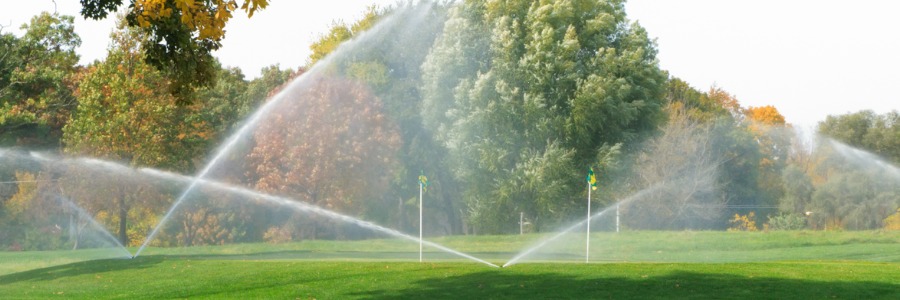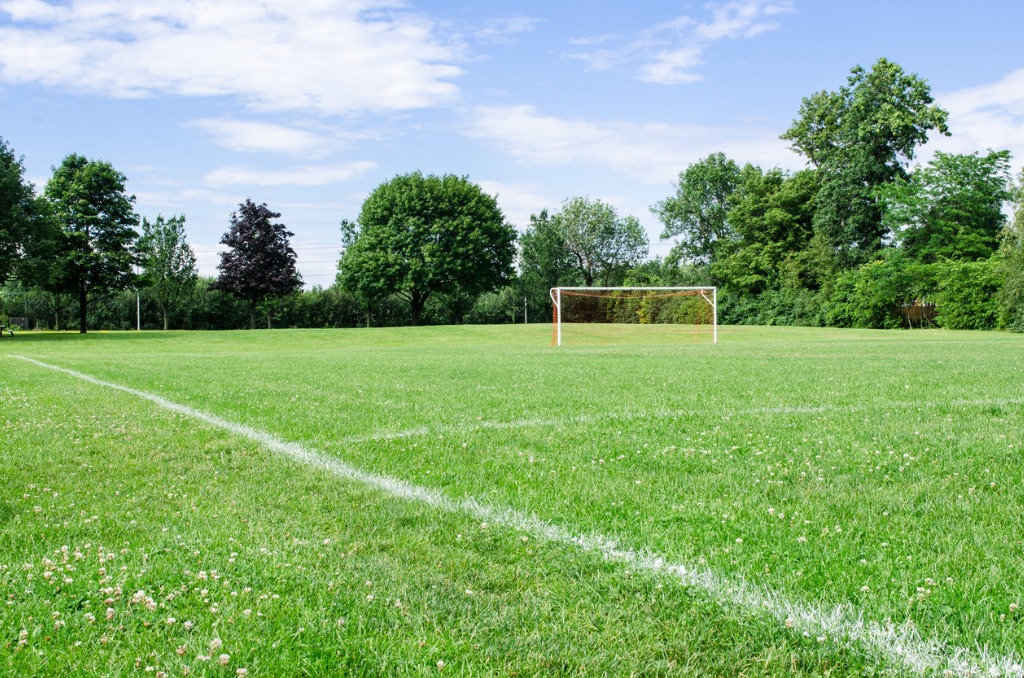
On an athletic field, natural grass is usually favored over artificial turf. Natural grass not only looks great, but creates a cooler field surface for players. It also eliminates injuries athletes can experience on unforgiving synthetic turf. But natural grass is a living plant, and regular gameplay and heavy stomping will damage the field surface if not properly maintained. Without the right method of irrigation, turf will die or go dormant. First thing to consider is choosing a field turf native to the region, and based on local environment.
A few examples of native field grasses, based on region are:
- Kentucky Bluegrass: This high-quality field grass is grown in the north, and is ideal for cooler seasons. Emerald green to dark blue in hue, it creates a thick, carpet-like surface with a very fine texture, ideal for football turf.
- Perennial Ryegrass: New varieties and improvements over the years have made this cool-season field grass stronger, better textured, and more resilient for gameplay. It forms a thick, dense sod and can grow quickly to cover damages that occur to the playing field.
- Bermuda Grass: Ideal for sports fields in warmer seasons, this field grass grows in the south– fast and dense– and is fast-repairing on a sports field surface.

No matter which field grass is chosen, maintaining health of the turf is paramount on a sports field. “If we don’t have good turf health– where areas don’t fill in as quickly– they don’t take the wear the same,” notes Damon Richardson, Field Tech for Pacific Sports Turf in Oregon who consults on field construction, repair and renovations, along with drainage, fraze mowing, infield soil augmentation, and water quality swale rehabilitation. Damon was a Featured Speaker on our Webinar, Best Practices for Designing and Maintaining Functional Athletic Fields available to view below.
“A lot of universities out here call it the pillars– or the stool,” Damon explains. “If one of those legs of irrigation, fertilization or mowing really falls off, you have susceptible plants where you can get more disease—and you can get higher wear and lower recovery. It doesn’t matter the grass plant or the region you’re in– you’ve got to focus on those fundamentals.”
No matter which field grass is chosen for a sports field, turf will be seriously weakened if not sufficiently irrigated. Maintaining a schedule for just the right amount of irrigation is essential for conditioning turf to handle and recover from stress caused by heavy athletic use on the field. The right method of irrigating a sports field, tailored to how much is needed to maintain field turf health, is critical. Nothing could be worse for players or more damaging to the field than overwatering and causing puddling or soggy field patches.
“We can go right to the basics of an irrigation system with good head to head coverage, good pressure, and the right nozzle selection,” says Jim White, Irrigation Manager for Pacific Sports Turf. “Some of the differences would be the sport itself– how that differs between a football field, a soccer field or a baseball field,” he continues. “Beyond that, some of the basic principles of the zoning, where the heavy use areas are on a particular sports field.”
Today’s cutting edge irrigation technology plays an important role when it comes to knowing when to schedule sports field watering, and how much. “We get out there frequently and use soil probes to check moisture levels in the root depth,” Jim points out. “That’s on a basic level. We’re fortunate to be able to use some of the higher-level technology– soil moisture sensors— which also give us temperature on top of that.”
The right amount of irrigation needed to keep sports field turf healthy is determined by climate—rainfall, wind, humidity, sunlight and temperature. Also important, is knowing the soil texture. The amount of sand, silt and clay in a sports field will influence how much water can be absorbed and held for turf health without puddling or running off. Soils with more clay and organic matter can hold more water. But sandy soils have poor water-holding capacity, so will need to be irrigated more frequently.
Maintaining a healthy sports field starts with choosing the right field grass native to the region and local environment. And today’s Smart Irrigation technology can keep turf healthy and resilient with independent, zone-specific station programming optimized for heavy-use areas on the playing field.
Check out our full webinar on Best Practices for Designing and Maintaining Functional Athletic Fields below!

